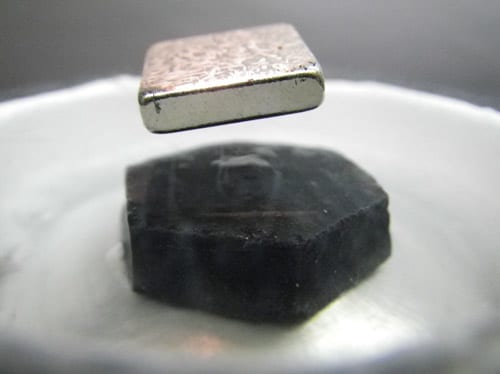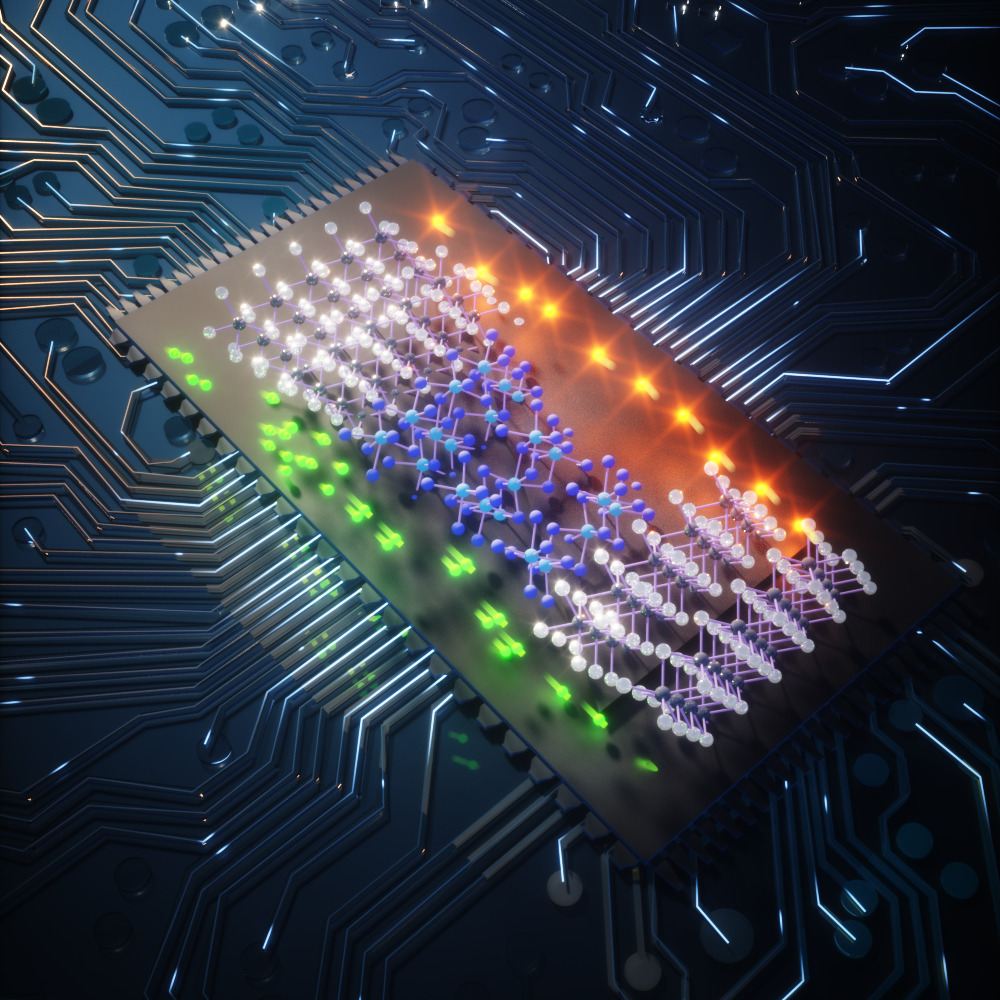
Superconductivity could have implications for creating technologies like ultra-efficient power grids and magnetically levitating vehicles
Physicists at the University of Waterloo have led an international team that has come closer to understanding the mystery of how superconductivity, an exotic state that allows electricity to be conducted with practically zero resistance, occurs in certain materials.
Physicists all over the world are on a quest to understand the secrets of superconductivity because of the exciting technological possibilities that could be realized if they could make it happen at closer to room temperatures. In conventional superconductivity, materials that are cooled to nearly absolute zero ( ?273.15 Celsius) exhibit the fantastic property of electrons pairing up and being able to conduct electricity with practically zero resistance. If superconductivity worked at higher temperatures, it could have implications for creating technologies such as ultra-efficient power grids, supercomputers and magnetically levitating vehicles.
The new findings from an international collaboration, led by Waterloo physicists David Hawthorn, Canada Research Chair Michel Gingras, doctoral student Andrew Achkar and post-doctoral student Zhihao Hao, present direct experimental evidence of what is known aselectronic nematicity – when electron clouds snap into an aligned and directional order – in a particular type of high-temperature superconductor. The results, published in the prestigious journalScience, may eventually lead to a theory explaining why superconductivity occurs at higher temperatures in certain materials.
“In this study, we identify some unexpected alignment of the electrons – a finding that is likely generic to the high-temperature superconductors and in time may turn out be a key ingredient of the problem,” says Hawthorn, a professor in Waterloo’s Department of Physics and Astronomy.
The findings show evidence of electronic nematicity as a universal feature in cuprate high-temperature superconductors. Cuprates are copper-oxide ceramics composed of two-dimensional layers or planes of copper and oxygen atoms separated by other atoms. They are known as the best
of the high-temperature superconductors. In the 1980s, materials that exhibit superconductivity under somewhat warmer conditions (but still -135 Celsius, so far from room temperature) were discovered. But how superconductivity initiates in these high-temperature superconductors has been challenging to predict, let alone explain.
“It has become apparent in the past few years that the electrons involved in superconductivity can form patterns, stripes or checkerboards, and exhibit different symmetries – aligning preferentially along one direction,” says Hawthorn. “These patterns and symmetries have important consequences for superconductivity – they can compete, coexist or possibly even enhance superconductivity.”
Learn more: Waterloo physicists discover new properties of superconductivity
The Latest on: Superconductivity
[google_news title=”” keyword=”superconductivity” num_posts=”10″ blurb_length=”0″ show_thumb=”left”]
via Google News
The Latest on: Superconductivity
- Quantum Breakthrough: Researchers Unlock New Realms in 1D Superconductivityon April 27, 2024 at 7:14 am
Researchers at the University of Manchester have made a major advancement in superconductivity by successfully maintaining robust superconductivity under high magnetic fields in a new one-dimensional ...
- Enhanced superconductivity in monolayer FeSe films on SrTiO₃(001) via metallic δ-dopingon April 26, 2024 at 10:21 am
Interface engineering has been proven to be effective in discovering new quantum states, such as topological states, superconductivity, charge density waves, magnetism, etc., which require ...
- Synthesis of two new carbides provides perspective on how complex carbon structures could exist on other planetson April 25, 2024 at 8:09 am
Researchers at the University of Bayreuth have gained new insights in the field of high-pressure carbon chemistry: They synthesized two new carbides—compounds of carbon and another chemical ...
- Manchester Scientists Find Novel One-Dimensional Superconductoron April 25, 2024 at 1:31 am
In a significant development in the field of superconductivity, researchers at The University of Manchester have successfully achieved robust superconductivity in high magnetic fields using a newly ...
- Judge dismisses superconductivity physicist’s lawsuit against universityon April 24, 2024 at 5:00 pm
Ranga Dias sued his university, in part, for allegedly conducting a biased investigation, which found he had committed extensive scientific misconduct.
- Scientists tune the entanglement structure in an array of qubitson April 24, 2024 at 10:02 am
Entanglement is a form of correlation between quantum objects, such as particles at the atomic scale. The laws of classical physics cannot explain this uniquely quantum phenomenon, yet it is one of ...
- Exploring Unconventional Superconductivity in Synthetic and Natural Materialson April 24, 2024 at 8:12 am
Superconductivity is a notable discovery that has recently gained significant attention. Conventional superconductors, such as aluminum and niobium, are considered major participants in this domain. 1 ...
- Condensed matter physics: Novel one-dimensional superconductoron April 23, 2024 at 5:00 pm
In a significant development in the field of superconductivity, researchers have successfully achieved robust superconductivity in high magnetic fields using a newly created one-dimensional (1D) ...
- Retractions are part of science, but misconduct isn’t — lessons from a superconductivity labon April 23, 2024 at 5:00 pm
Journals, funders and institutions that employ researchers all want to produce or disseminate rigorous scientific knowledge — and all can learn lessons from misconduct cases.
- MIT Technology Reviewon April 23, 2024 at 2:00 pm
A detailed study confirms that record-setting magnets built by the Plasma Science and Fusion Center and Commonwealth Fusion Systems meet the requirements for an economical, compact power plant.
via Bing News










